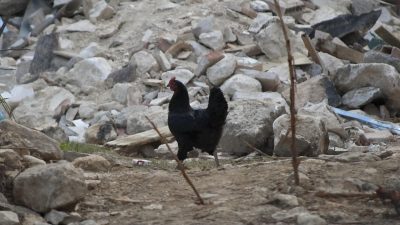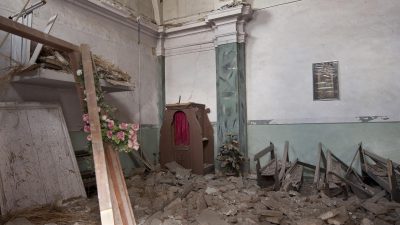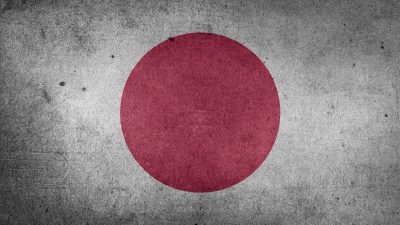Uncovering The Devastation, Failures, And Lessons We Still Haven’t Learned
1. The Earth Shook: How the 1934 Nepal–India Earthquake Changed Everything
The 1934 Nepal–India Earthquake was one of the most devastating seismic events in the history of South Asia. It not only caused immense destruction but also led to long-lasting consequences in both Nepal and India. Measuring 8.0 on the Richter scale, it struck on January 15, 1934, and affected vast regions across the northern parts of India, including Bihar and parts of Nepal. The quake’s sheer magnitude shattered buildings, homes, and infrastructure, leaving a significant human and economic toll.
The aftermath of the earthquake left a legacy of ruin and disarray. Entire villages were flattened, and the number of lives lost was staggering. The destruction spread across urban areas, causing severe disruption to daily life and affecting trade, transportation, and communication. This catastrophic event was not just a natural disaster; it became a defining moment that would shape future disaster response strategies and preparedness measures in the region.
2. The Untold Truth Behind the 1934 Nepal–India Earthquake
While the 1934 Nepal–India Earthquake is widely documented, certain aspects of the disaster remain shrouded in mystery. The earthquake, which was part of the larger Himalayan seismic zone, had warning signs that were either missed or misunderstood. Despite ongoing seismic activity in the region, a lack of effective monitoring systems and geological understanding at the time meant that the true scale of the threat was not recognised.
In the aftermath, the failure of the British colonial government to respond adequately exposed the weaknesses in infrastructure and disaster management. The inadequate preparation, especially in rural areas, meant that recovery efforts were slower and more chaotic than they might have been. It raises questions about how much could have been prevented or mitigated had there been better planning and foresight.
3. When the Ground Cracked: What the 1934 Nepal–India Earthquake Really Cost Us
- Death Toll: The earthquake claimed between 10,000 and 20,000 lives, with most casualties occurring in Nepal and Bihar. The high mortality rate was due to the sheer magnitude of the quake and the vulnerability of buildings that were not earthquake-resistant.
- Displacement: Over a million people were displaced, many left without shelter, food, or basic necessities. Entire villages were reduced to rubble, and survivors were forced to live in temporary shelters for months or even years.
- Economic Damage: The total economic loss was astronomical. Key infrastructure such as roads, bridges, and railways were severely damaged, halting trade and commerce for a prolonged period. The agricultural economy in the region was also heavily impacted, leading to food shortages and a rise in poverty.
4. Shattering Lives: The Hidden Consequences of the 1934 Nepal–India Earthquake
Beyond the immediate destruction, the 1934 Nepal–India Earthquake left profound emotional and psychological scars. The trauma of losing loved ones, homes, and livelihoods impacted generations of survivors. Many families were displaced for years, and rebuilding their lives in the wake of such a catastrophe was a slow and painful process.
The quake also had long-term consequences on social structures. Traditional systems of support, such as local community networks, were broken apart, leading to social fragmentation. The psychological toll was often compounded by the lack of adequate healthcare and mental health support during the recovery phase.
5. Why the 1934 Nepal–India Earthquake Was More Destructive Than We Thought
The 1934 Nepal–India Earthquake was devastating not only because of its magnitude but also due to a combination of factors that exacerbated its impact. Poor building construction in both urban and rural areas meant that even moderate shaking caused catastrophic damage. Most structures, including homes, schools, and offices, were not built to withstand earthquakes.
Moreover, the lack of early warning systems, limited access to education about earthquake preparedness, and insufficient governmental response amplified the disaster’s destructive power. While the scale of the earthquake was unprecedented, the compounded issues made it more destructive than initially anticipated, and the aftermath lingered far longer than expected.
6. The Aftermath of the 1934 Nepal–India Earthquake: Is Our Response Enough?
The response to the 1934 Nepal–India Earthquake raised serious questions about the preparedness of both local and colonial governments. The initial rescue efforts were slow, and many affected areas received little to no aid in the immediate aftermath. The colonial British government was slow to recognise the full scale of the disaster, which led to delays in mobilising resources.
In the years following, both Nepal and India made significant efforts to rebuild their communities, but the recovery process was marred by political and logistical challenges. The earthquake highlighted the need for stronger disaster management systems and better coordination between local governments, international organisations, and humanitarian agencies.
7. Could We Have Prevented the 1934 Nepal–India Earthquake? The Shocking Facts
- Seismic Monitoring: In 1934, the technology to predict earthquakes was not as advanced as it is today. Modern seismographs and early warning systems could have alerted people to the impending disaster, potentially saving many lives.
- Building Standards: A significant factor in the earthquake’s devastation was the lack of earthquake-resistant buildings. Had more stringent building codes been enforced, the loss of life and property damage would likely have been much less severe.
- Awareness Campaigns: Public education on earthquake preparedness was nearly non-existent in the region. If communities had been better prepared, it could have reduced casualties and speeds up recovery.
8. When Earthquake Strikes: How the 1934 Nepal–India Earthquake Revealed Our Vulnerabilities
The 1934 Nepal–India Earthquake exposed a number of vulnerabilities in the region. One of the key lessons was the lack of disaster preparedness. Local governments were ill-equipped to handle the scale of the disaster, and the international response was slow to mobilise.
Additionally, the lack of modern infrastructure made recovery much harder. Roads, bridges, and railways were destroyed, isolating affected regions from immediate aid. This event underscored the importance of investing in resilient infrastructure and having disaster management plans in place for such catastrophic events.
9. The 1934 Nepal–India Earthquake Catastrophe: What the Media Didn’t Tell You
Despite the magnitude of the 1934 Nepal–India Earthquake, much of the media coverage was incomplete or misleading. In many cases, the true scale of the devastation was underreported, particularly when it came to the human suffering in rural areas. The media often focused on urban centres like Patna and Kathmandu, where the damage was more visible, but neglected the widespread destruction in less accessible regions.
Moreover, the colonial government’s handling of the disaster was often portrayed in a more favourable light than it deserved. The underreporting of the quake’s aftermath made it difficult for the global community to fully grasp the scale of the disaster, slowing down international aid and relief efforts.
Conclusion: A Legacy of Destruction: The Long-Term Impact of the 1934 Nepal–India Earthquake
The 1934 Nepal–India Earthquake left a legacy that still affects both countries today. The destruction caused by the quake highlighted the urgent need for better disaster preparedness, resilient infrastructure, and more effective governance. The recovery took decades, and while progress was made, the earthquake’s scars are still visible in some parts of the region.
As we look back on this tragedy, it serves as a stark reminder of the need to prepare for future earthquakes, particularly in a region as seismically active as the Himalayan belt. Governments must prioritise disaster preparedness and ensure that their communities are equipped to handle similar crises in the future.
5 Short FAQs
- What caused the 1934 Nepal–India Earthquake? The earthquake was caused by tectonic shifts along the Himalayan fault line, a common cause for seismic activity in the region.
- How many people died in the 1934 Nepal–India Earthquake? It is estimated that between 10,000 and 20,000 people lost their lives, with many others injured or displaced.
- What were the major cities affected by the earthquake? Patna in India and Kathmandu in Nepal were among the hardest-hit cities, along with many rural areas in both countries.
- What has been done since 1934 to prevent such devastation? Improvements in building codes, seismic monitoring, and disaster preparedness programmes have been implemented in the years following the earthquake.
- Could modern technology have predicted the 1934 Nepal–India Earthquake? While modern technology could have provided earlier warnings, the lack of seismographic tools and early warning systems in 1934 meant that the earthquake struck without much notice.
References:
“1934 Nepal–India Earthquake – Wikipedia”
“INDIA’S 8.4 EARTHQUAKE OF 1934 – Film & Video Stock – eFootage”
“1934 Earthquake Bihar/Nepal – CIRES”
“Revisiting the 1934 Mw 8.2 Bihar–Nepal earthquake—Simulation of…”




